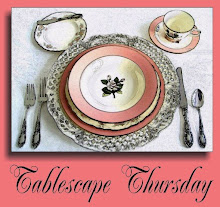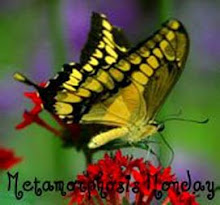I've been keeping my bird feeders filled because of all the snow we've had.
I've been rewarded by seeing so many birds.
It seems they come in flocks of their own kind!!
A few days ago I had a huge amount of cardinals. Then one day a flock of starlings flew in.
The last couple days I've had so many beautiful blue jays.
(Let me say upfront, that these photos are not mine but ones I found online.
Every time I went to the window with my camera, all the birds flew away and even when I stood there awhile, they kept away till my arms almost fell off holding the camera up.)
Blue jays are a medium sized bird; bold, aggressive and territorial. They are easily recognized with their perky crest, bright blue, white and black feathers and noisy calls.
They are known for their intelligence, complex social systems and tight family bond. They are monogamous, they mate for life or till one of the mates die.
They can be found in a wide area of places but like edges of woodlands with mixed deciduous and pine trees and especially oaks. Their favorite food is acorns, but eat all kinds of nuts, sunflower seeds and suet. They use their heavy black bill to crack nuts and open sunflower seeds.
They will feed at feeders but prefer ones on a pole as opposed to hanging ones.
Being a more dominant bird, they will chase smaller birds and even squirrels away to get the best pick of seeds and nuts!
They can produce a variety of sounds and can even mimic human sounds and hawk cries.
Blue jays are native to northern and central U.S. and southern Canada.
They breed between March and July. Their nests are made from twigs, fresh roots and moss. It is an open cup type of nest like a robin's. The male usually brings the twigs etc. to the selected tree while the female usually does the building.
After eggs are laid and when they are hatched, it's the female who is on the nest and the male delivers the food to both mother and babies. The blue jays will defend their nests and fledglings, chasing other birds and humans away.
A blue jay's eggs range in color from light blue to beige with brown spots.
Fledgling blue jays are among the cutest of baby birds.
Birds are fascinating if you take the time to watch them.
There is a lot of information on all kinds of your back yard song birds.
I got much of this information from here:
Come spring and early summer I will be kept busy containing my barn cats and two bird dogs so the fledglings are safe after leaving the nests.
Think Spring!!
Shirley























They are beautiful birds love the colours.
ReplyDeleteMerle........
Wonderful pictures!
ReplyDeleteHello,
ReplyDeleteI have just discovered your blog and enjoy it a lot. I am writing to you from Nova Scotia. I have spent quite some time reading your different entries and love your hens. Have you ever posted a picture of the coop itself? If so could you guide me when that was. I've seen the fantastic enclosures you have for them. I'm thinking of getting hens myself this summer, I have cleared an area in my fields for them and would like to have 5 or 7 not more. Could you also tell me the dimension of the coop.
Thank you very much,
Marie-Louise
Marie-Louise,
DeleteGo here to see coop: http://shirleys-world.blogspot.com/2012/07/the-decorated-coop.html
or you can email me you email address and I'll send you other pictures. Also can give you some good hints on getting started with chickens. My email is scorwin1@mac.com
This comment has been removed by the author.
ReplyDeleteYou can look along the right sidebar under "Labels" and see pictures of my coop and more posts about my chickens.
DeleteHello again,
ReplyDeleteI found it! Actually it was under your label entitled "Happenings" dated March 23, 2012. It's a great coop! Thank you, I find all your posts on chickens very informative and entertaining.
Have a nice day,
Marie-Louise in snowy Nova Scotia